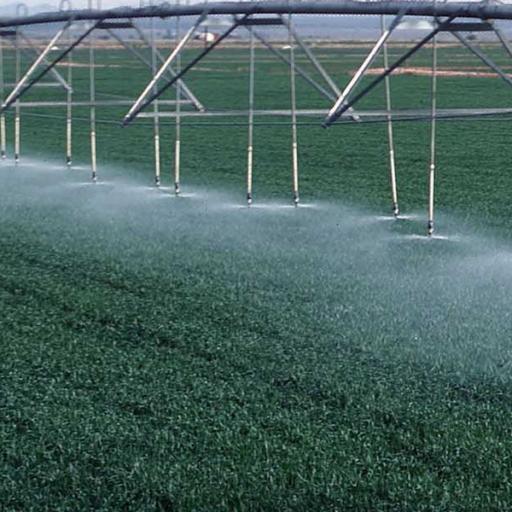Over the past decades, food insecurity and environmental degradation issues have been placed at the top of the global political agenda. With the agricultural sector being the largest economic sector in many regions of the developing world where food insecurity is prevalent and a major contributor to environmental pollution, political attention has been arguably placed on agriculture as a key driver for jointly achieving food security and environmental goals. As a result, the sector has been extensively targeted for policy interventions aiming to raise agricultural productivity while preserving natural resources and the environment. Efforts have concentrated on the development of policy programs and initiatives directed to accelerate the transition to sustainable farming systems, enhance agricultural innovation, and promote the adoption and diffusion of new agricultural technologies, particularly among smallholder farmers. Yet, despite the policy interventions, a steady increase in food insecurity and agricultural pollution levels is witnessed in recent years, questioning the effectiveness of past agricultural policy measures.
Although there is a general consensus among researchers that the widespread adoption of improved technologies is essential for ensuring sustainable growth in agricultural production, an important debate remains in the relevant literature over how such technologies can be effectively promoted among farmers, particularly in developing regions. Following the early contributions of and and the influential work of, a large number of studies has emerged after the middle 80's seeking to explore empirically the drivers of adoption behavior in agriculture and map farmers' preferences towards innovation. However, this empirical literature is often characterized as inconclusive, providing mixed results on the impact of commonly investigated factors on adoption rates. For instance, although the majority of studies stress the importance of farmer's education in adoption decisions, a few other studies find insignificant or negative effects of education on adoption rates. Similar controversies and asymmetries in results are documented for other determinants that have been a common preoccupation of adoption studies in agriculture, such as farm size, access to credit, farmer's age, and others. Needless to say, this diversity in research findings can yield flawed information to policy makers, explaining, in part, the ineffectiveness of past agricultural policies.
The lack of robustness in reported estimates can be partly attributed to differences in characteristics among adoption studies. Existing empirical work examines adoption behavior in a variety of settings and for a variety of technology types, relies on different empirical approaches and specifications, and uses various datasets from a wide range of regions around the globe, observed at different periods of time. This great heterogeneity in study attributes is undoubtedly important and may result in significant variations in study outcomes. In addition, observed asymmetries in reported estimates can be due to an artifact related to certain research choices made by researchers driven by the interest to obtain results consistent with the conventional view or results with higher statistical significance, i.e., publication selection bias. However, to assist evidence-based policy-making, a comprehensive synthesis of the diverse findings in the adoption literature is necessary, that could enable identification of the sources of heterogeneity beyond research choice biases.
Meta-regression analysis (MRA) is a powerful statistical method with many applications in the economic literature, which allows researchers to summarize and synthesize diverse findings in a comprehensive and objective manner. MRA enables tracing excess study-to-study variations in reported estimates attributable to differences in study characteristics while, at the same time, isolating potential effects associated with research choices. Within the context of the literature on technology adoption in agriculture, MRA can serve as a valuable tool for synthesizing the diverse findings related to the impact of various determinants on technology adoption rates and identify sources of heterogeneity across adoption studies beyond publication bias. Therefore, by its very nature, it may enable, not only the estimation of the "genuine'' effects of the various determinants on adoption decisions, but also the identification of significant sources of heterogeneity in findings attributable to differences in research methods, sample characteristics, geographical areas, and types of agricultural technologies. As such, it can provide valuable information both to policy makers and researchers.
In this paper, we employ an MRA approach to meta-analyze the average partial effects of eleven factors that regularly appear in empirical studies examining farmer's adoption behavior worldwide. In particular, the following variables identified in our meta-dataset as the most commonly investigated determinants of farmer's adoption decision were anayzed: farmer's age, education and gender, household size, membership in groups, unions or associations, access to extension services, access to credit and off-farm income, farm and herd size, and farm's distance from the market. Our analysis considers 122 observational studies from the literature related to technology adoption in agriculture, which are published in 24 peer-reviewed journals since 1985, covering farmer's adoption behavior around the world and for a diverse range of agricultural technologies. Using this unique and broad meta-dataset, we investigate whether the above-listed determinants have a "genuine" effect on adoption rates. Moreover, we identify the sources of heterogeneity across reported estimates on average partial effects, and examine whether publication bias is one of the drivers of observed asymmetries in estimates. The MRA model is estimated using the Weighted Least Squares (WLS) estimator suggested by, which allows capturing observed heterogeneity arising from differences in research design or population characteristics across studies
Our study adds to the existing body of knowledge mainly through three routes. First, it develops a unique meta-dataset consisting of all published studies using a Probit, Logit or Tobit model to analyze the probability of adoption in 37 developed and developing countries around the world, covering the period from 1985 to 2021. Second, unlike previous studies in the area, our study meta-analyzes the average partial effects of eleven variables agreed among researchers to affect the probability of adoption. As such, it entails rich information on the ``genuine'' average partial effects of the most important adoption determinants and, therefore, may serve as a valuable source of information for evidence-based policy-making, as well as for future research in the field. Third, it provides first empirical evidence on the sources of heterogeneity across adoption studies in agriculture with respect to the average partial effects of various determinants. Previous work in the field has been based mainly on normative appraisals of the adoption literature, thus, providing less objective assessments on the sources of heterogeneity, while neglecting to account for research choice biases. Needless to say, accurate and up to date information on the sources of heterogeneity can be highly useful for researchers seeking best research practices and methods.







